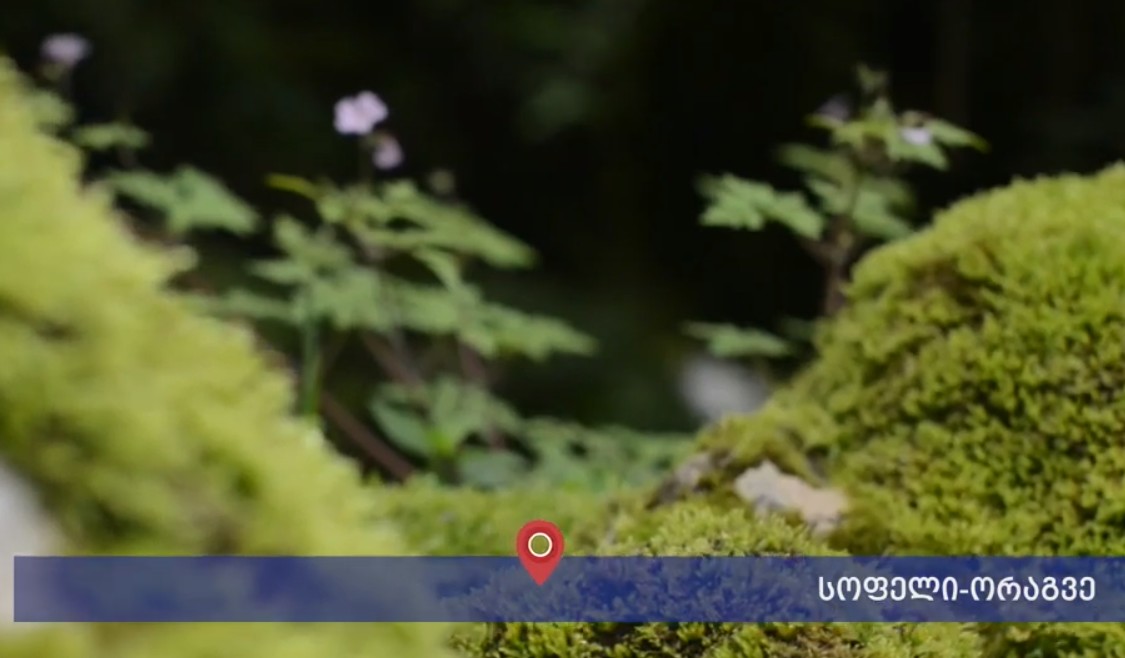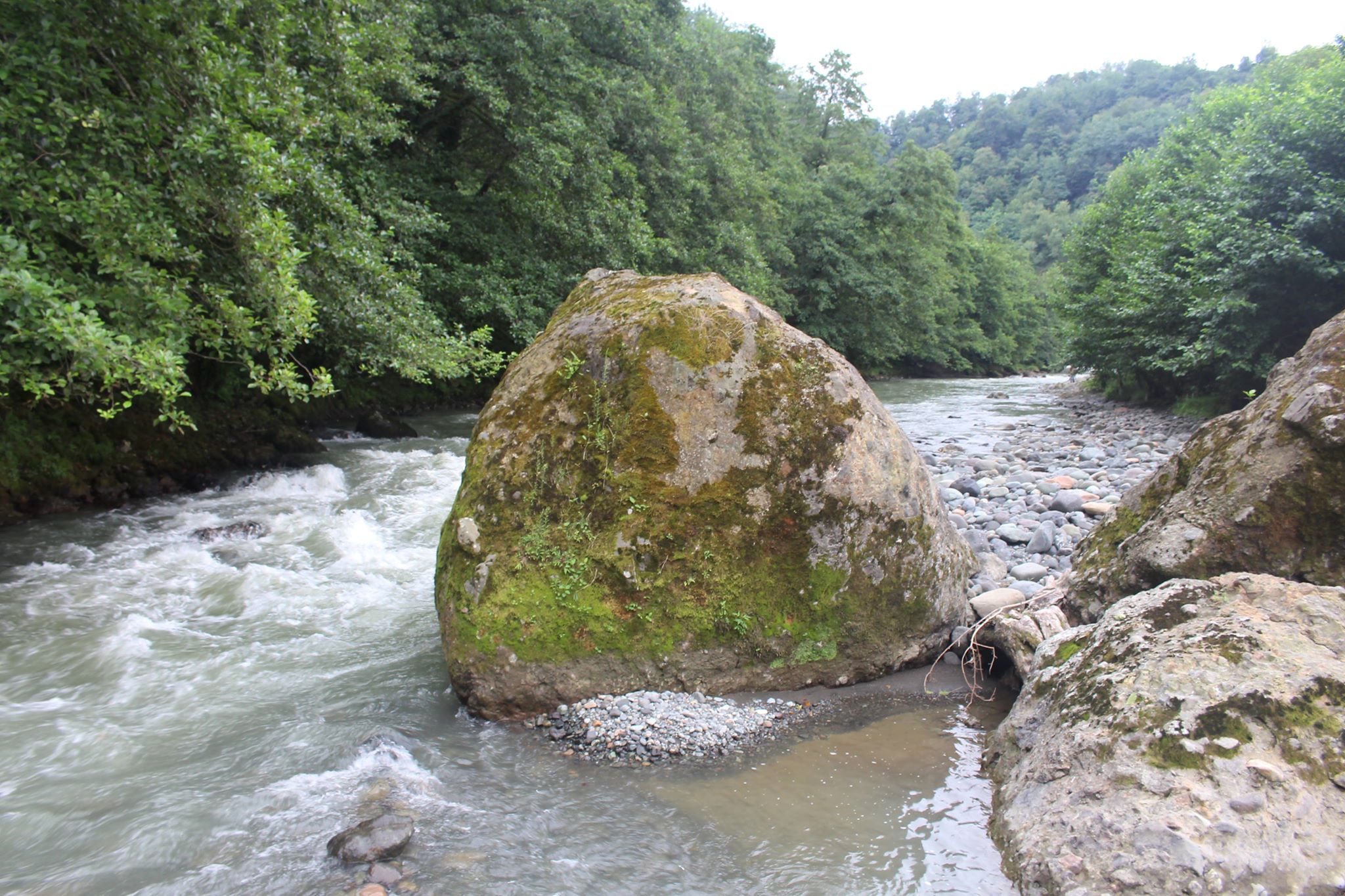[:en]Ozurgeti is a small city which is quite easy to navigate on foot or riding a bike.
Ozurgeti emerged in the 16th century as a trading town and as the administrative center of Guria. The oldest structures in Ozurgeti are the ruins of Gurieli Baths. The structures are surrounded by concrete blocks for some reason. It is hard to discover any other traces of the medieval parts of the town.
There is a garden of the town adjacent to the Baths which was built by Mamia V Gurieli with help of the Scottish agronomist, Jacob Marr. The garden is divided into three parts and there is a huge theatre building located within it. There is no other large theatre of its kind in Georgia. A small portion of XIX century Ozurgeti is located at the end of the garden. Here you will find one of the palaces of Gurieli, a two-story house, which now belongs to the Patriarchate and the wooden oda houses which characterize Gurian traditions. The commercial center of the town is old Saparaskevo and from here its an easy walk to the historic district of the town. Here the Archeological Museum is located and you will be able to find the oldest school of Ozurgeti. That so many nationally famous politicians, scientists and public figures came out of this provincial town is a miracle. Some examples are: Noe Jordania, Noe Ramishvili, Egnate Ninoshvili, Isidore Ramishvili, Silibistro Jibladze, Gerasime Makharadze, Apolon Tsuladze, Solomon Tseishvili, Avqsenti Megrelidze, and Filipe Gogichaishvili. Ozurgeti’s History Museum is located directly by the baths and the Folklore Center is located in the building. Ozurgeti is famous folklore tradition and hosts international folklore festival every autumn. Philimon Koridze lived and worked here. He was the first Georgian musician to record Georgian chants in music notes and so that they could be retained for the future generations.
Ozurgeti also has an art gallery and there is a cinema nearby, however it is no longer operational.
Generally, Ozurgeti was very actively engaged in developing Georgian cinema. Germane Gogitidze built one of the first Georgian cinemas in Ozurgeti in 1910. This was the place, where Germine Gogitidze and Aleqsander Tsutsunava started to shoot the first Georgian movie – Qristine.
The appearance of present-day Ozurgeti was developed in Soviet times and the railway station is an interesting building displaying Soviet-era architecture.[:ka]ოზურგეთი პატარა ქალაქია, ფეხით ან ველოსიპედით მარტივად შემოივლის ადამიანი. ოზურგეთი მე-16 საუკუნეში გაჩნდა, როგორც სავაჭრო ქალაქი, და გურიის სამთავროს ცენტრი. ყველზე ძველი ნაგებობა გურიელის აბანოს ნანგრევია, რომელზსეც, რატომღაც ბლოკის კედლით შემოურაგიათ. შუა საუკუნეების ქალაქის სხვა რაიმე ფიზიკურ კვალს სამწუხაროდ ვერ მიაგნბეთ. აბანოების წინ ქალაქის ბაღია. ეს ბაღი გურიის უკანასკნელ მთავარს მამია V ურიელს გაუშენებია შოტლანდიელი აგრონომის იაკობ მარის დახმარებით. ბაღი ქუჩებით სამ ნაწილადაა დაყოფილი. მასში დგას თეატრის უზარმაზარი შენობა. თეატრისთვის განკუთვნილი ამხელა შენობა საქართველოში სხვაგან არ შეგხვდებათ. ბაღის ბოლოში XIX საუკუნის ოზურგეთის ერთი პატარა კუთხეა. აქ დგას ერთ-ერთი გურიელის სასახლე, ორსართულიანი შენობა, რომელიც ახლა საპატრიარქოს ეკუთვნის და გურიისთვის დამახასიათებელი ხის ოდასახლები. ერთ-ერთ მათგანში არქეოლოგიური მუზეუმია მოწყობილი. ქალაქის კომერციული ცენტრი, ძველი საპარასკევოა, საიდანაც ახვალთ სერზე, ისტორიულ უბანში, სადაც ქალაქის ყველაზე ძველი სკოლა დგას. გასაოცარია, როგორ აღიზარდა ამ ერთ პატარა, პროვინციულ ქალაქში ამდენი საქვეყნო მასშტაბის პოლიტიკოსი, მეცნიერი თუ საზოგადო მოღვაწე: მოე ჟორდანია, ნოე რამიშ- ვილი, ეგნატე ნინოშვილი, ისიდორე რამიშვილი, სილიბისტრო ჯიბლაძე, გერასიმე მახარაძე, აპოლონ წულაძე, სოლომონ ჭეიშვილი, ავქსენტი მეგრელიძე, ფილიპე გოგიჩაიშვილი. ქალაქში მდებარეობს მნიშნველოვანი ისტორიული მუზეუმი, რომელიც უშუალოდ აბანოსთან დგას. შენობის ერთ ნაწილში ფოლკლორის ცენტრი შენდება. ოზურგეთი ფოლკლორის ქალაქად არის ცნობილი და ყოველ შემოდოგმაზე მასპიინძლობს ფოლკლორის საერთაშორისო ფესტივალს. აქ ცხოვრობდა და მოღვაწეობდა ფილიმონ ქორიძე, პირველი ქართველი მუსიკოსი, რომელმაც ქართული საგალობლები ნოტებზე გადაიტანა და ამით შეუნარჩუნა შთამომავლობას.
ოზურგეთში ნახავთ სურათების გალერეას. იქვე დგას აწ უკვე გაუქმებული კინოთეატრი. საერთოდ, ოზურგეთი ქართული კინოს სათავეებთან იდგა. 1910-იან წლებში აქ საქართველოში ერთ-ერთი პირ- ველი კინოთეატრი ააშენა გერმანე გოგიტიძემ. აქვე დაიწყეს გოგიტიძემ და ალექსანდრე წუწუნავამ პირველი ქართული მხატვრული ფილმის, „ქრისტინეს“ გადაღება.
ოზურგეთის დღევანდელი გარეგნული იერსახე საბჭოთა პერიოდშია შექმნილი. მაშინდელი შენობებიდან საინტერესოა რკინიგზის სადგური.[:]
[:en]Ozurgeti[:ka]ოზურგეთი[:]
![[:en]Ozurgeti[:ka]ოზურგეთი[:] post thumbnail image](https://guriatourism.com/wp-content/uploads/2019/02/ozurgeti.jpg)
Categories:




